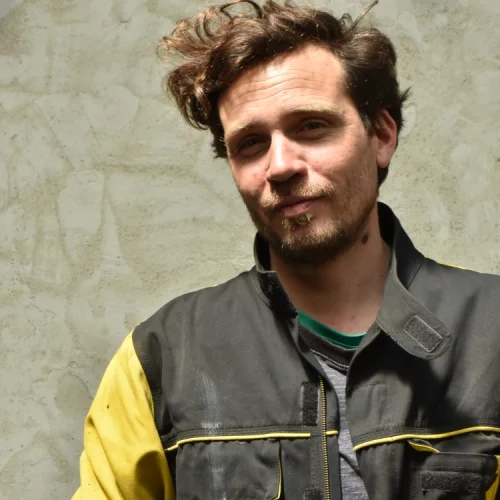
Julien Allègre, born in 1980 in Arles, is a self-taught sculptor and musician renowned for his unique approach to metal sculpture. Initially destined for a career in mechanics, he turned to art after being influenced by music and decisive encounters with other artists.
Julien Allègre began his artistic career working with metal, which he considers to be a living and reactive material. He is known for his sculptures that explore the relationship between the heaviness of metal and his own artistic sensibility. His works are characterised by the use of recycled materials, such as oil drums and barrels, which he transforms into poetic and strange characters. Over the years, Allègre has broadened his range of materials by incorporating antique bronze, which allows him to navigate between the archaic and the contemporary in his creations. His work is marked by a quest for harmony between raw materiality and refined aesthetics.
Allègre stands out for his ability to reinvent mythical figures and challenge established cultural certainties. His art is often described as a wild writing of disfiguration, where he explores the scars of humanity through jagged forms and shattered materials. His artistic approach is strongly influenced by his travels, particularly to Senegal, where he discovered the art of recycling.
In short, Julien Allègre is an artist whose work transcends the traditional boundaries of sculpture to offer a profound reflection on the material and the immaterial, the past and the present.
Being able to express my admiration for nature seemed obvious to me these slender beings are guardians of a bygone era, and sentinels of the present … They are devoid of colour and of heads, in their simple stature as observers,
their bodies resemble fantastic skeletons of branches where the fantasised time would have left only the essential matter to still be able to bear witness!
These fossilised men are one of the outcomes of the journey of the material that I have been developing for more than ten years. I have learnt to work the metal that I most often find in its mercantile state, already used but in the form of an object, and to give it what seems to me to be a living aspect.
The material has become rough, the range of rust tones is poetry to me, the layers of lines are reminiscent of the rise of spring sap, the ends of the pieces are like a burst of branches calling out to their foliage.
Once placed in a ‘natural’ environment, they seem to dialogue with their surroundings, firmly dismissing any wrongdoing that could be done to the nature of which they are the guardians.
Julien Allègre